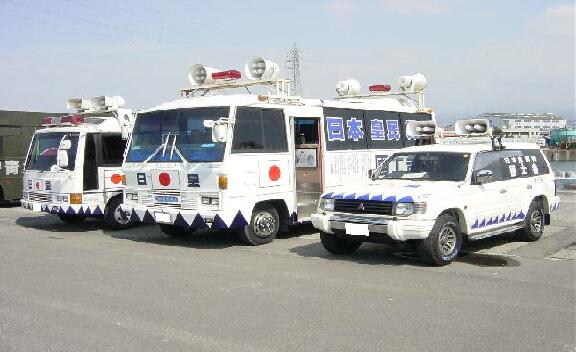You may have noticed that Prime Minister Shinzo Abe isn’t all that popular these days despite only having been in office for 2 months. The newspapers are reporting a 20% dip in support, and he has been mired in scandals, the most recent of which surrounds Tax Commission Chairman Masaaki Honma, who was forced to step down for living in subsidized housing with his mistress. This is the first change to Abe’s appointed team since taking office and a major development that could lead to further loss in confidence.
Compared to Koizumi’s first 2 months in office back in 2001, when the lion-maned PR darling was a veritable rockstar with his own hit photobook, Abe isn’t getting a break. And this despite the nuclear missile test in NK, which would presumably inspire a nation to rally around its leader.
While the substance of Abe’s policy agenda got its share of attention, the media has seemed to go out of its way to focus on Abe’s missteps, in particular the town meeting scandal (Abe knew!), the readmittance of the postal rebels (the LDP is cynical!), and his supposed lack of resolve in pursuing economic reform and budget discipline (he’s giving power back to the evil bureaucrats!).
Why? One reason is the Ozawa-led DPJ. They have so far done a good job of relentlessly pushing the first two issues in the spotlight, in particular the town meeting scandal, which was embarrassing since the LDP government was caught red-handed. There’s an upper house election in 7 months, and it comes at a time when LDP is vulnerable (the LDP member who won seats in 2001 on the Koizumi popularity wave must now stand for reelection) that also happens to be a traditionally unlucky year for the LDP. While some reports claim the DPJ is being needlessly uncooperative, the numbers show that these scandals are taking their toll on Abe’s popularity rating, and that makes them effective. Without public support Abe loses quite a bit of leverage if he’s to lead policymaking and stay in power for his full term.
But another, more likely, explanation is that Abe is having a tough time dealing with the media. For one thing, he isn’t playing ball with the press gaggle.
I noted back in October that Abe decided to cut in half his daily press availabilities from 2 to 1. The reports offered no real explanation for the change, but it was significant enough to get reported in the first place. Instead, he is relying on his PR double team of Chief Cabinet Secretary Yasuhisa Shiozaki and Special Advisor Hiroshige Seko to deal with the press while he does the awesome prime minister stuff like eat school lunches.
But it hasn’t taken very long for the media to complain that they aren’t getting enough face time. Abe got in trouble just yesterday when he talked way too long during his press conference announcing achievements upon the end of the recent extraordinary Diet session. He used up 19 minutes of a 20 minute press conference to blab on listlessly about the legislative achievements of passing patriotism-instilling education reform and the promotion of defense agency to ministry status.
The media was livid and ran stories announcing that only 2 questions could be asked, and later reports announcing the forthcoming apologies from both Shiozaki and Abe himself. Abe pledged that it someone made a “clerical error” by giving him a long speech at a press conference. How convenient just a day before you have to fire someone!
Now, I don’t want to go and accuse the major media of manufacturing any of his scandals, or blowing things out of proportion (though they may be doing the latter). It’s just that they haven’t been very sympathetic, either. The Honma scandal came out of a muckraking piece by a less-prestigious weekly. Many reports by the weeklies (such as Abe’s ties to shady cults) are ignored by the larger newspapers, but this time they picked up the story, making the problem much larger than it normally would have been.
It’s strange to see this change in the relationship, since as far as I know, Abe has so far had a rather amiable relationship with the press, who helped raise his image as the hero working to rescue kidnapping victims from North Korea. Now it’s like they’re setting him up for a fall just because it would be a good story.
But rather than being angry, the media could simply be getting bored with a prime minister whose hair is far too normal. One anonymous insider quoted in a Reuters story was sympathetic with Abe’s situation, noting that Abe is in part simply dealing with the Koizumi legacy of staged appearances and neverending soundbites: “Abe is doing what he can, but to the public who’s used to theater-style politics it just looks normal.” Replace the word “public” with “media” and you’ll get the idea.

 A number of police officers watch the intersection intently. There is also an anti-riot squad carrying duralumin shields. Security trucks are stationed at hotels, and several patrol cars can be seen spinning their red lights at the city hall. This is what Kobe looked like on November 26 as a state of heightened security continued throughout the city. Just what was going on that day?
A number of police officers watch the intersection intently. There is also an anti-riot squad carrying duralumin shields. Security trucks are stationed at hotels, and several patrol cars can be seen spinning their red lights at the city hall. This is what Kobe looked like on November 26 as a state of heightened security continued throughout the city. Just what was going on that day?